-
Posts
1,716 -
Joined
-
Last visited
Content Type
Profiles
Forums
Gallery
Events
Posts posted by Modeler12
-
-
Thanks guys, but Mike the drums for the Dremmel are way too course. Keep in mind that the wall thickness for these boats is only about .050 inch.
I do have some other grinding wheels and they may help to 'hog' out the main parts, but not for the finishing.
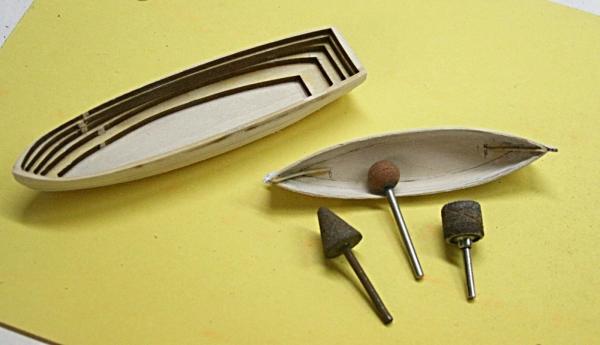
I have been trying to get some sanding drums for the dremmel with a fine grit, but no luck thus far.In fact, I have made my own drums for a thickness sander that works on my drill press, but those are larger diameter and not for 'special' usage.
Jud, I remember 'rolling my own' right after WWII. The hardest thing to get was not the tobacco but the papers. My dad even had a little machine that worked like making sushi. Kind of ages me



-
The USS Constitution kit has four boats that are made up by laminating pre-cut sheets as shown below.
To get rid of the extra wood inside is a bear. I have used chisels, diamond coated bits in a dremmel like tool and then still had to do a lot of hand sanding.
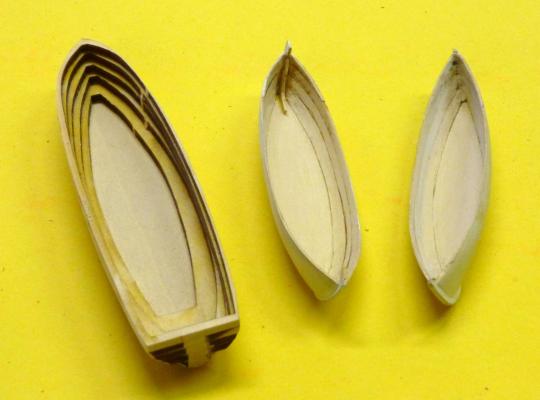
Some time ago I took an electric toothbrush, cut off the bristles and glued on a piece of sandpaper.
Now I went a step further; took a piece of dowel, adapted it to the electric gismo, flattened one side, added sandpaper and voila . . a nice sander for tight spaces.
Just don't let the kids get hold of it. -
Nice video tutorial, Jay.
I suspect your boats aren't going to take anywhere near as long as mine took to build.
Steve, I wouldn't bet on that. These boats have a lot of detailed work to be done.
Here is part 2 of the videos. I thought by now I would be doing the insides, but then it turned out that there were 'details' that took longer. The picture below is when I blackened the gudgeons for the two rudders.
I am holding off with the pinnace for a while.
The next step is to paint the hulls, finish the tarp on one of the whaleboats, etc.
- CaptainSteve, WackoWolf, lambsbk and 1 other
-
 4
4
-
Making the boats.
I don't know how this is going to work out, but I thought it might be of interest to show how I started with making the boats for the Conny via the video below.
This may not last long because there is some extra work involved. But it is another way to cover a lot with one post.

You do have to turn on the sound . . . .
- CaptainSteve and Bindy
-
 2
2
-
I posted this earlier below but thought it might be better here.
In California, Nevada and Utah we have a system called Link+ which allows me to order books from libraries throughout those states. Below is a sampling of five books I have from different libraries. I ordered them online and it took about ten days when I was notified by my local library that they were ready for pick-up.
Perhaps other states have a similar arrangement and I would suggest checking with your librarian.
I found this to be a great way to review books before I bought my own.
-
Alas, I have to create saw dust in the same area where I do the ship rigging. But one thing I did right. I used part of sheet of 3/4 inch particle board covered with a white laminate for the table top. It gave me a really hard and flat surface and I can find little pieces real easily. In fact. I even painted the floor around the table white also.
Instead of an island, my main work area is a peninsula with lots of tool storage underneath (similar to what Remco showed above). This gives me access to at least three sides of the model and some place to put tools and supplies towards the wall on top of the workbench.
In a way I wished I had incorporated some kind of 'Lazy Susan', or turn table, because I have turned the model around soooo many times during the rigging. But then again, I use this space for other projects that are more 'rigid'. Meanwhile I just have to continue turning the base and duck every time it comes around.
- olliechristo and Jaydee37
-
 2
2
-
I got this idea from J. Ponto.
In the past I have had problems seizing or attaching blocks to spars or other places that are high up on the ship.
I took an old desk lamp, gutted the cord and socket and replaced that with some extensions and a special fixture on top.
I had this small Sony tripod that I never use, took off the legs and adapted it to a small C-clamp. Now I have numerous ways of twisting, turning and reaching those awkward places with a hemostat or other tool that clamps as shown above. In order to use it at deck level, I simply take off one or two of the extensions.
Thanks Ponto.
-
After seeing what Michael in Santa Monica has done with his Vasa I am a bit ashamed to publish this new video, but here it is any way.
I wanted to make 16 guns that are only 6 pounders for my next project.
They are very small, but here I try to show how I went about this.Oh, you might turn up the sound for this.
They are not yet finished, need new barrels, etc.
-
-
Come on guys. You are making me blush.
I do enjoy putting together some videos and I am working on another one right now.
-
Sorry about the mix-up, Michael. I should have realized that you are working on the Vasa.
I am sure you have seen lots of pictures and perhaps the original in Stockholm.
My wife and I were there a number of years ago and saw the remains.
What struck me at the time (before ship modeling) was the extra-ordinary care that went into carving (and painting) those details. After all this was a war ship.
Here are a couple pictures from our visit.
Now I am sure you are going to include those in your model, right?

-
-
-
-
-
Here is my two cents worth.
I have had this Monkey Ward's 'rotary tool' for probably fifty years. It still works great, but I have used it sparingly. It comes in handy when I need to drill a bunch of small holes. So I adapted it to my old drill press and I can use the quill accordingly. Whether or not the speed is adjustable does not matter to me (10,000 or 30,000 rpm, who knows what is the best for what???)
Unlike others here I don't use it too much 'free-hand', but I use it more on either my mini-mill or drill-press as shown below.
The transition from 'large wood working' to 'tiny stuff' takes a bit of adjusting.
But you will find lots of satisfaction in creating the 'small stuff'.
-
Hi Jay
I've been looking for longer end mills, similar to what you were using in post #37. Can you tell me where you found the longer end mills?
Thanks!
Frank
Sorry, Mahuna, the one I showed came from my father-in-law who used to have a die casting shop.
I inherited that one and several others, but I have no idea where they came from originally.
However, have a look at what is available from McMaster. I just plugged in 2 inches for the length, but there are lots more to choose from.
http://www.mcmaster.com/#end-mill-cutters/=rgbit2
Oh, you have to use the column to the left and plug in the length you want.
-
One more thing about the carriage assembly.
When I have to make more than two or three of one kind, I like to make some fixtures to cut and assemble.
For the tapered 'platforms' I cut a groove at a slight angle from horizontal in the wooden 'miter box' and then cut the pieces with a stop.
Sorry the picture above is not very clear, but I hope you get the 'picture'.

Then it is was a matter of assembling the 'platform' and the bolster pieces as one unit (see example to the far right below).
Those simple assemblies are then going on top of the rear axle.
I know Henry Ford would cringe at the sloppy lay-out but it worked for the 16 or so I had to make.
- mtaylor and avsjerome2003
-
 2
2
-
-
-
Not to wax too poetic. But a real wooden ship is a living thing. It changes continously if slowly over time. These national treasures that are preserved for hundreds of years also reflect the vision of thier successive caretakes over the years
Michael, if you are quoting this (or, perhaps an original thought on your part,. . . great), we have to remember that 'real wooden ships', small or large, can be indeed a treasure. And when we build a model, we hope that it will be saved by some of our kids or others, with or without our names as the modeler..
However, if it is a 'real' ship (or boat as I used to have), it is not a living thing but a 'pleasure'.
I had many of the latter in the San Francisco Bay.
Sorry, I just had to throw this out.
-
No-one has mentioned the use of PVA or carpenters glue. Is that cause it is no good for metal to wood?
One more vote against PVA for bonding metal.
Elmer's just came out with a 'New Product' called Probond Advanced. It is touted to bond almost anything to anything but even the MSDS gives no clue what it actually is. All they tell you is 'not available'.
I bought some and bonded wood to wood. It was no better than Titebond II. Besides, the price for a 2 ounce jar was more than the 8 ounce Titebond.
Then I bonded two pieces of aluminum with a 3/4 x 3/4 inch overlap. I followed the instructions (sanded the two surfaces, clamped them and let it cure for 24 hours). When I grabbed the two, the bar fell right off in my hand.
Epoxy is the way to go for metals.
-
Martin, I am sure you realize that the clamps also need the T-slot nuts and a couple screws to hold the clamps to the table.
Mine actually have some grooves in the back and another matching plate so I can apply leverage to the downward force. It is similar to the slotted clamping blocks that are part of another accessory.
I also must admit that a mill needs several different cutters, clamps, parallel plates and more, adding to the cost.
-
- WackoWolf, hollowneck and tasmanian
-
 3
3



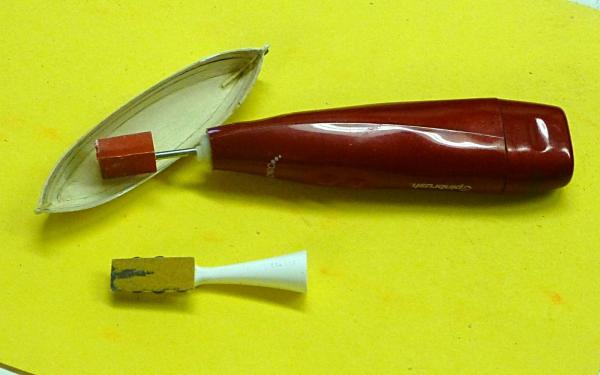
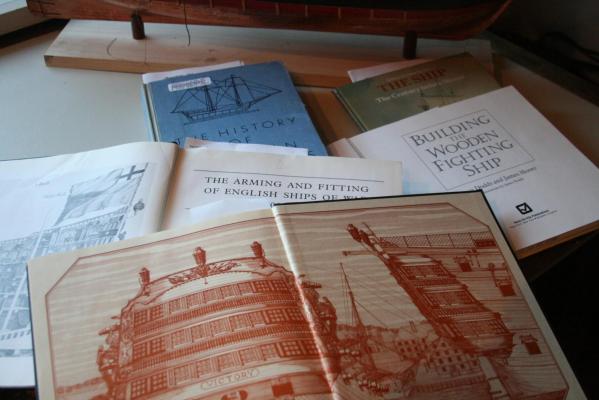
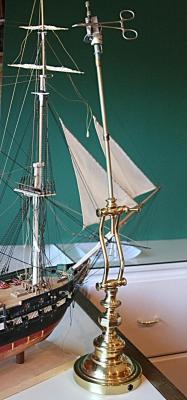
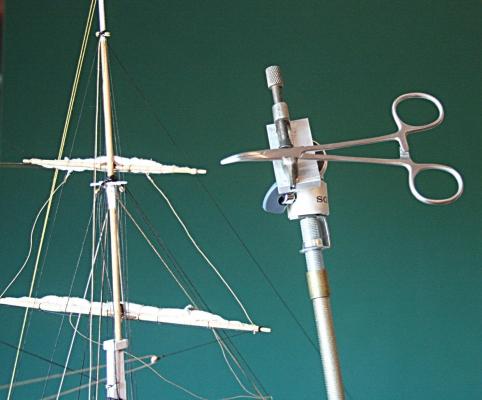
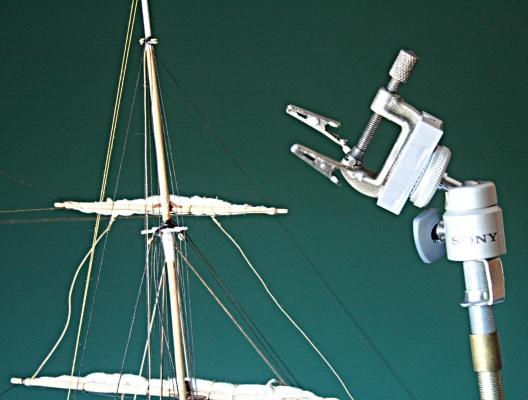
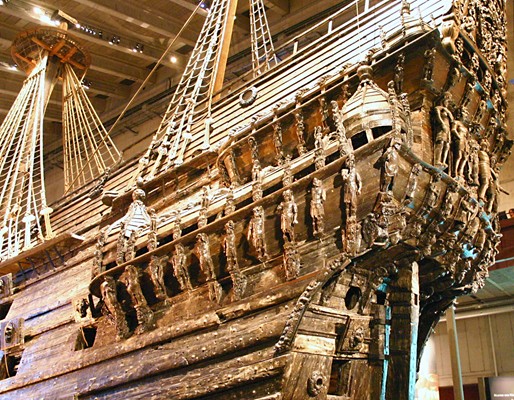
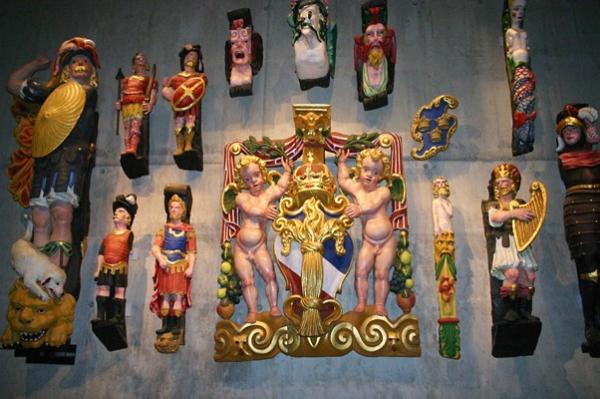
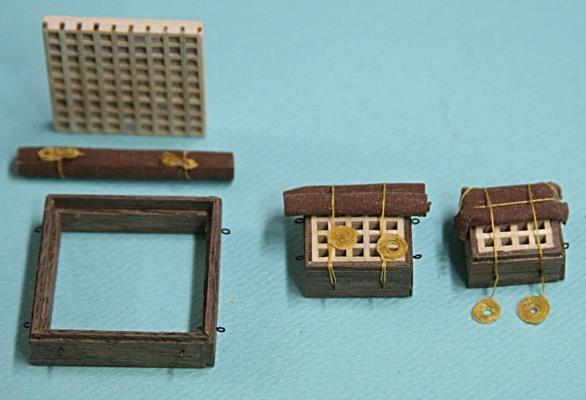
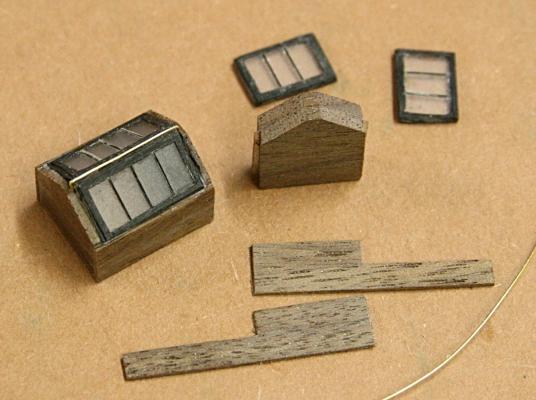
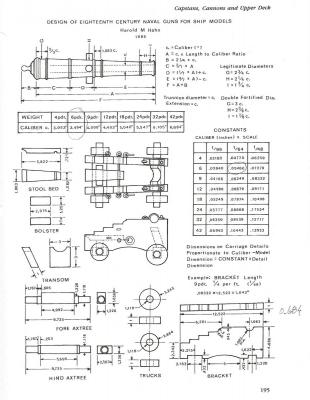
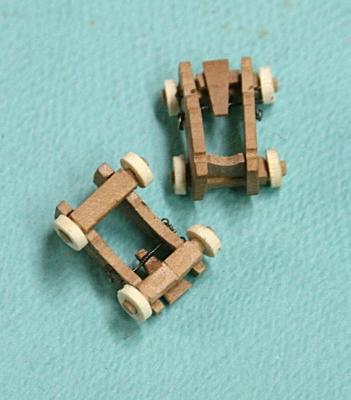
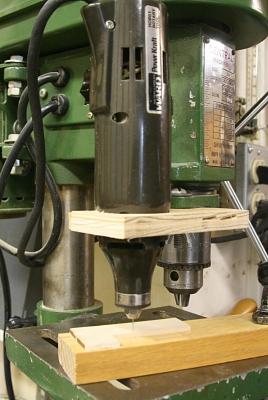
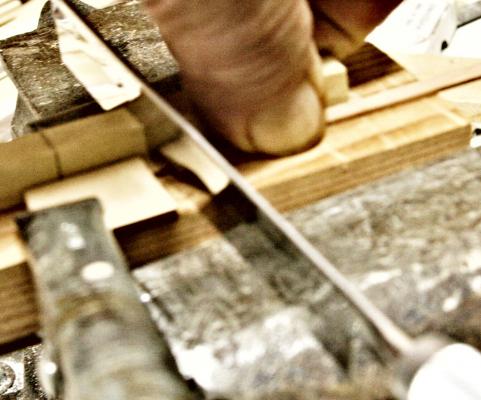
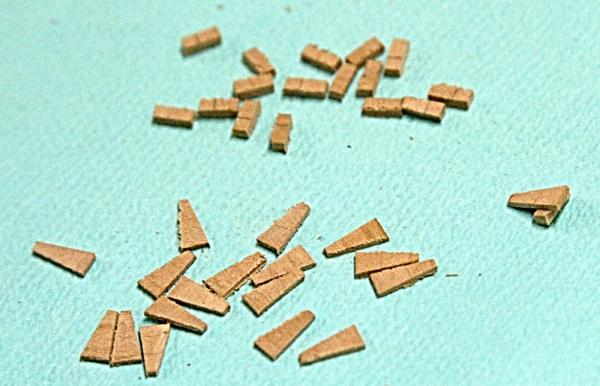
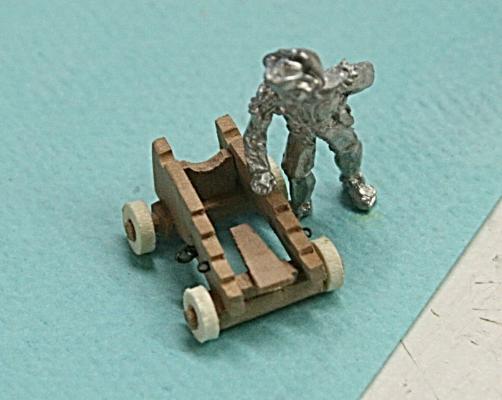
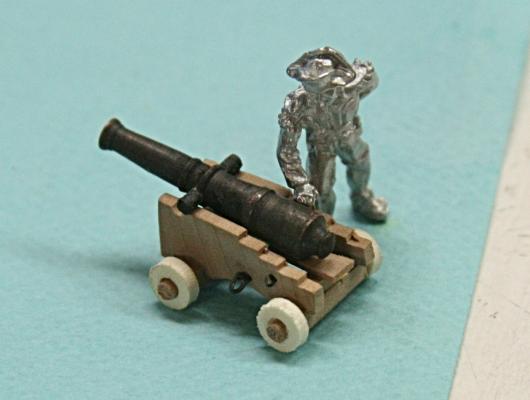
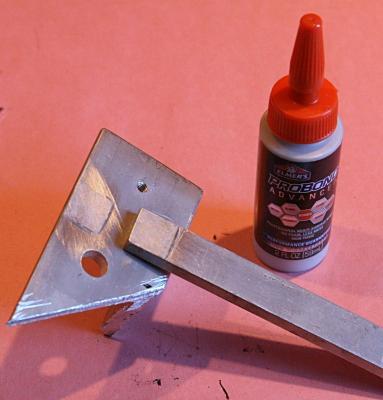
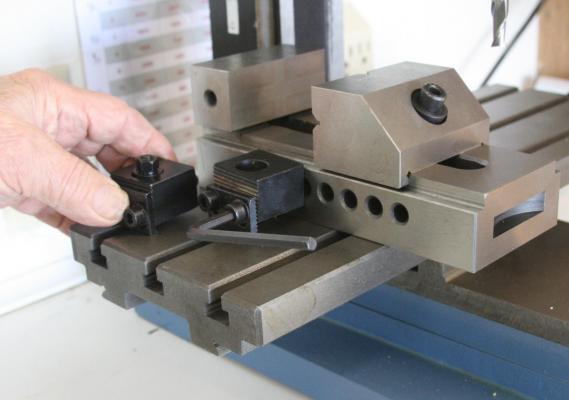
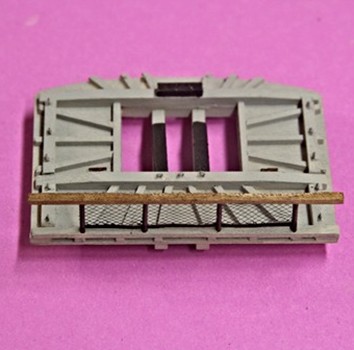
Sanding the inside of boat hulls.
in Modeling tools and Workshop Equipment
Posted
You apparently missed my whole point of posting this. I don't always polish manually. That is why this little converted toothbrush came in handy for what I was trying to do. Polishing is not necessary because the inside of these boats will be painted.
I would be interested in the little drums in grit sizes down to about 400, but I don't see those any where.